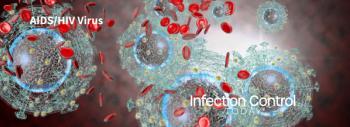
H1N1 Simulation Modeling Shows Rapid Vaccine Roll-out Effective in Reducing Infection Rates
Early action, especially rapid roll-out of vaccines, is extremely effective in reducing the attack rate of the H1N1 influenza virus, according to a simulation model of a pandemic outbreak reported in a new study in the Canadian Medical Association Journal.
The article presents a simulation model that projects how many people will be infected under different disease control strategies. The model simulated a pandemic outbreak based on demographic information from London, a mid-sized city in Ontario, Canada as well as epidemiologic influenza pandemic data. It looked at the impact of vaccination timing, school closures and antiviral drug treatment strategies as well as the effect of pre-existing immunity.
The authors simulated a large range of possible scenarios that may play out in reality, to determine whether any general conclusions could be drawn. The model captures how vaccination not only protects vaccinated individuals but can also help the healthcare system to cope by flattening the peak of the outbreak and delaying the peak. The model provides mathematical predictions for how and when that could happen.
The H1N1 pandemic has required decision-makers to set policy in the face of significant uncertainties, and simulation models can be used to help them decide on the best strategy to mitigate the spread of infection.
"The results of our pandemic influenza simulation model suggest that vaccination can have a disproportionately large impact on reducing the attack rate in a "fall wave," although delays can significantly erode its effectiveness," write Dr. Marija Zivkovic Gojovic and coauthors.
As well, the model predicts that school closures would be effective. However, the authors note there are important social costs of school closures that they did not examine in the analysis. The study did not attempt to predict influenza-related deaths, and did not assess vaccination strategies targeted to high risk groups or specific age groups, such as school-age children.
The model was developed by researchers from the University of Toronto, the Ontario Agency for Health Protection and Promotion and the Research Institute of the Hospital for Sick Children in Toronto; and University of Guelph in Guelph, Ontario.
Newsletter
Stay prepared and protected with Infection Control Today's newsletter, delivering essential updates, best practices, and expert insights for infection preventionists.






